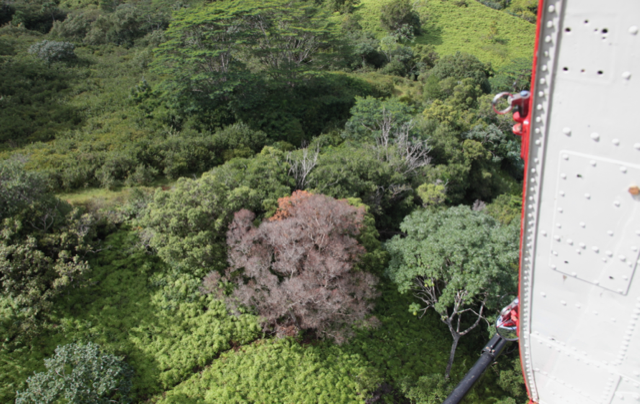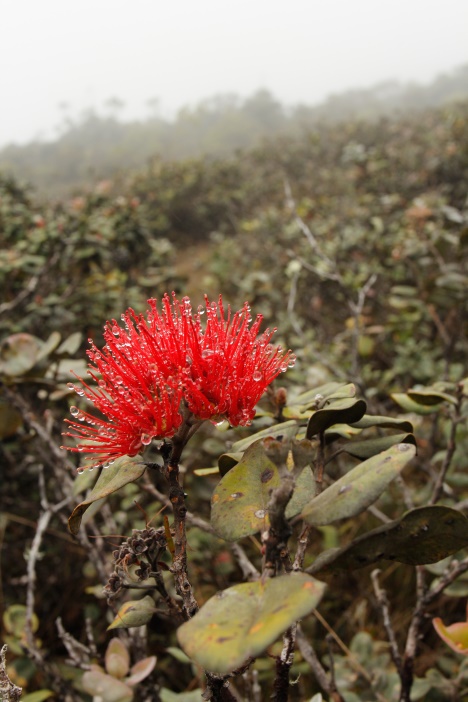In last year’s newsletter, Kim Rogers wrote a piece about ROD. This year, she recaps last year’s article while providing more recent information as well as advice on how to prevent the spread of the disease.
You can find more information at RapidOhiaDeath.org
Threats to our Native Trees
by Kim Rodgers, Kauaʻi ROD Outreach Specialist
In 2019, Rapid ‘Ōhi‘a Death took the lives of more ‘ōhi‘a, Hawai’i’s most abundant native tree in the forest. Since its first detection at Moloa‘a State Forest Reserve on Kaua’i’s northeast side, the pathogens leading to Rapid ‘Ōhi‘a Death have been confirmed in multiple locations on the North, East, and South sides of the island. More than one hundred ‘ōhi‘a have now tested positive for either Ceratocystis huliohia or Ceratocystis lukuohia, the two fungi that colonize in the vascular system of ‘ōhi‘a and block the flow of water throughout the tree, leading to its demise. Numerous trees in Koke‘e State Forest, where our native forest birds can be found, have been tested; however, at this time no trees have tested positive.
Results from research studies on Hawaiʻi Island where Rapid ‘Ōhi‘a Death was first detected a half-dozen years ago point to the possible impact of feral ungulates (pigs, goats, cattle) in contributing to the disease transmission. Surveys from fenced areas where ungulates have been removed show significantly lower presence of the disease. A wound is required for an ‘ōhi‘a to become infected. Scientists theorize that in these ungulate-free, fenced areas where are no ungulates to create wounds—rubbing against the trunks and digging among the roots of trees—trees stand a better chance of staying healthy. Forest users are also highly encouraged to be mindful of ‘ōhi‘a by not scuffing roots, breaking branches, and/or blazing trails when moving through the forest. A healthy ‘ōhi‘a forest is critical to maintaining the fragile ecosystem necessary for Kauaʻi’s numerous native flora and fauna. A healthy ‘ōhiʻa forest also replenishes aquifers and helps maintain a healthy ocean reef by preventing soil erosion.
Guidelines for Preventing the Spread of ROD
1) Keep your eyes open. If you see ʻōhiʻa with a limb or crown turning brown, take a picture, and contact KISC via email (saveohia@hawaii.edu) or phone (808-821-1490). Samples of the wood must be taken by trained technicians and tested in a laboratory to confirm the presence of the ROD fungi.
2) Avoid injuring ʻōhiʻa. Wounds serve as entry points for the fungus and increase the odds that the tree will become infected and die from ROD. Avoid pruning and contact with heavy equipment wherever possible.
3) Clean gear and tools, including shoes and clothes, before and after entering the forest and areas where ʻōhiʻa may be present. Brush all soil off tools and gear, then spray with 70% rubbing alcohol. Wash clothes with hot water and soap.
4) Wash your vehicle with a high-pressure hose or washer if you’ve been off-roading or have picked up mud from driving. Clean all soil off tires–including mountain bikes and motorcycles–and vehicle undercarriage.
5) Don’t move ʻōhiʻa wood or ʻōhiʻa parts, including adjacent soil. The disease can be spread to new areas by moving plants, plant parts, and wood from infected areas to non-infected areas.




